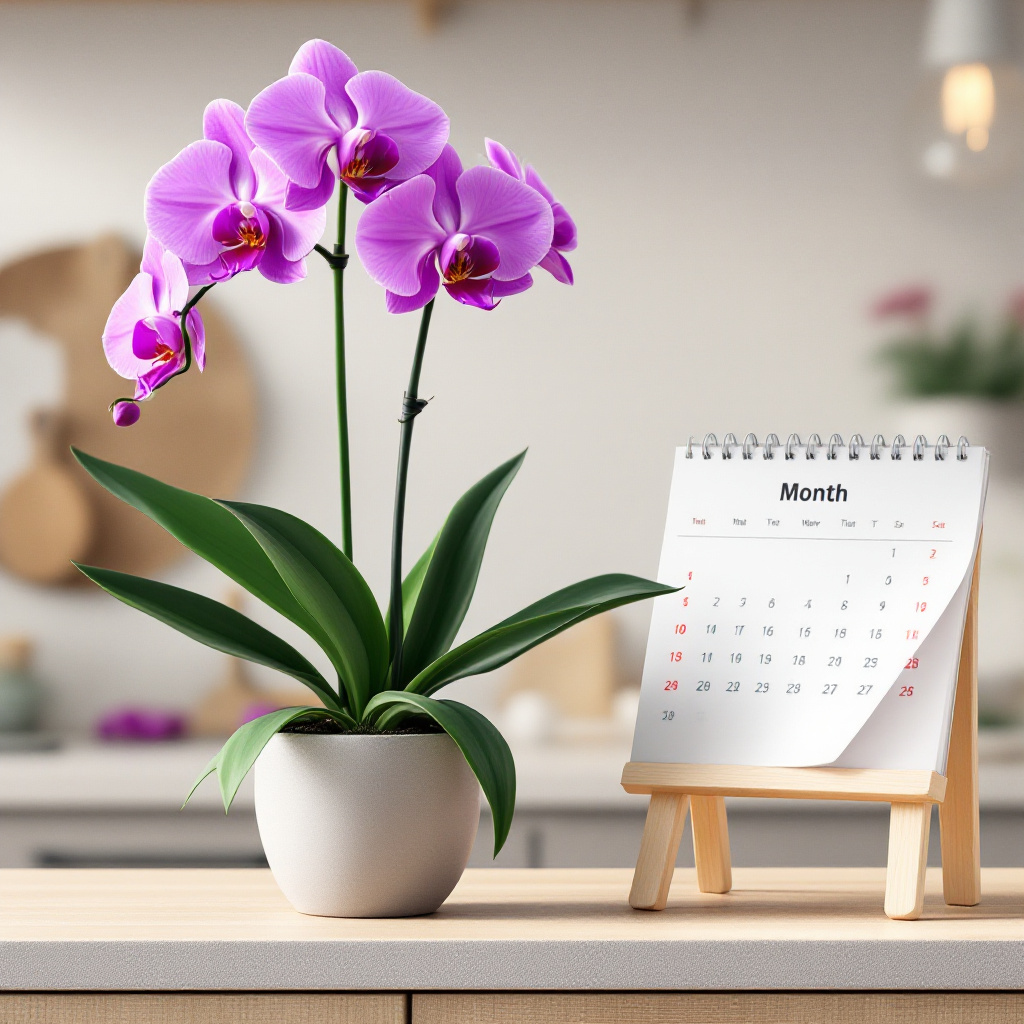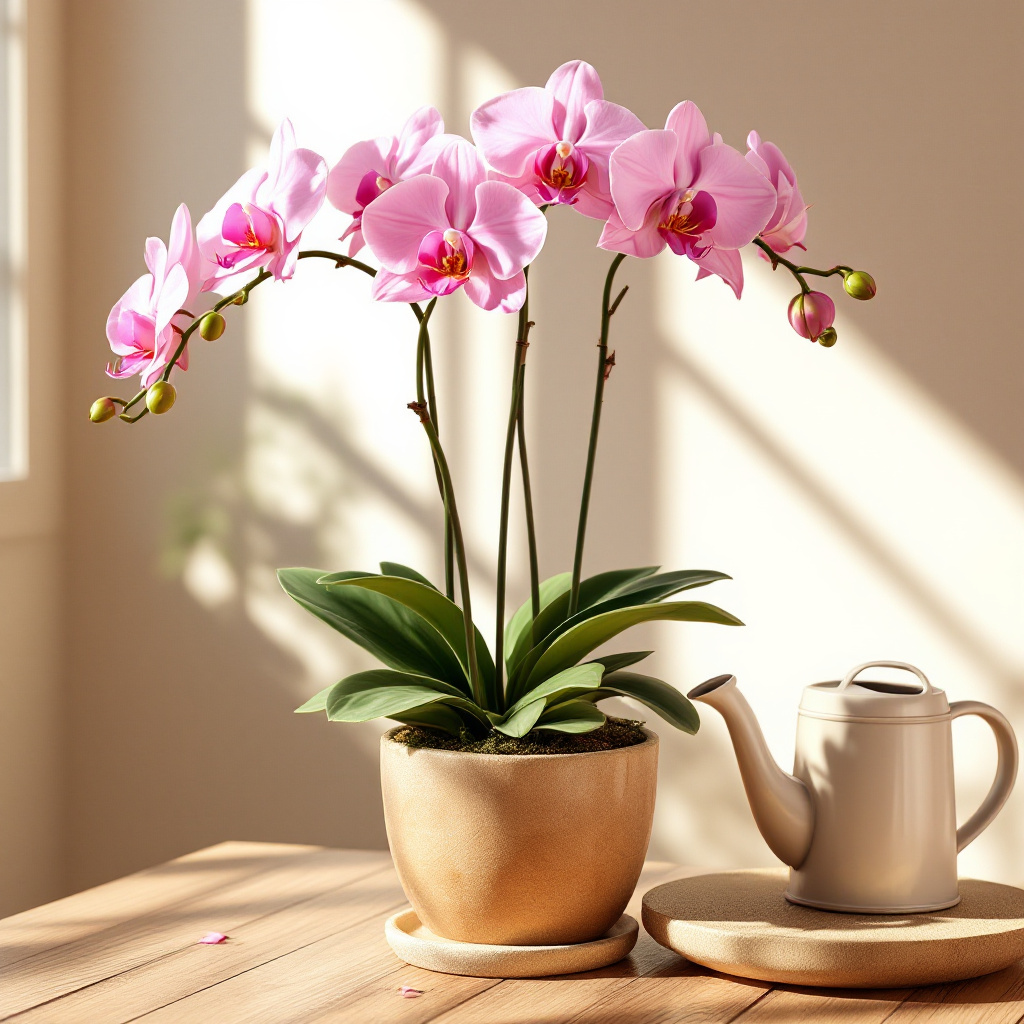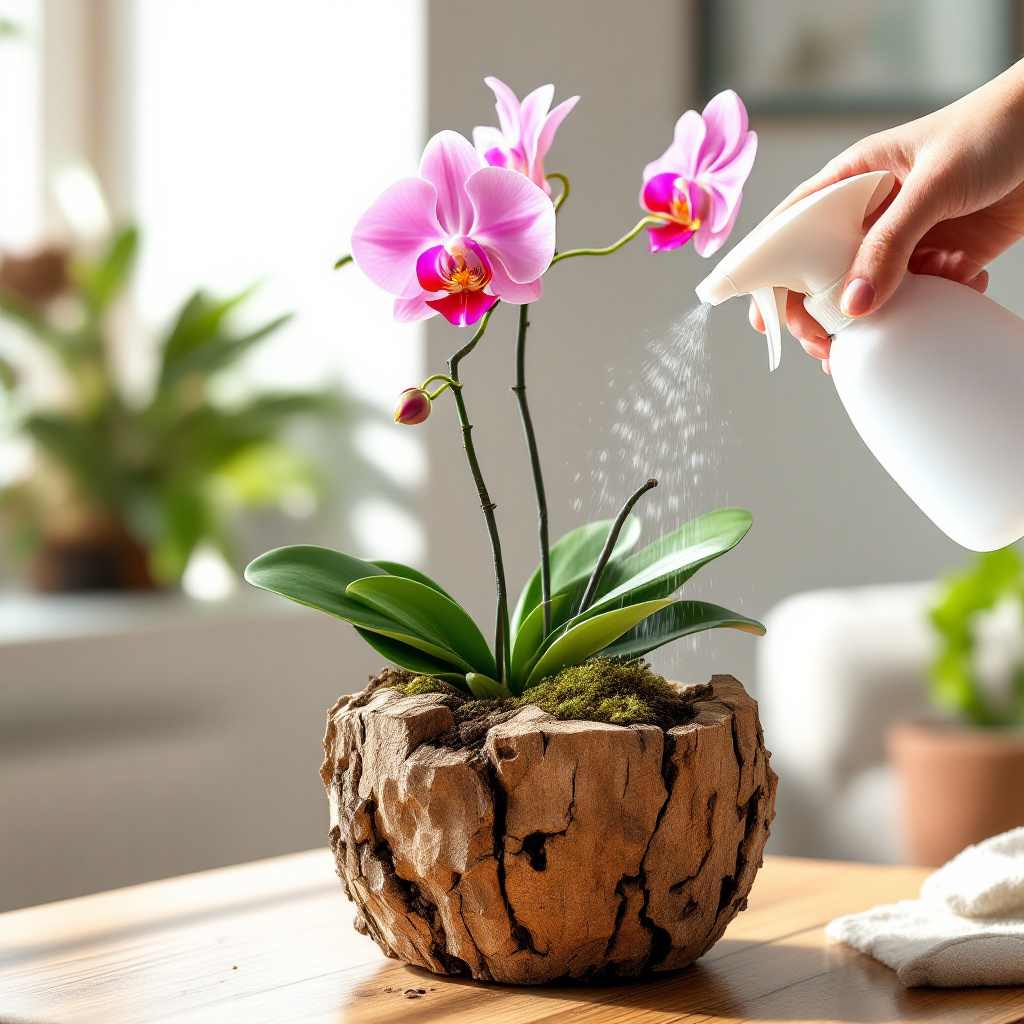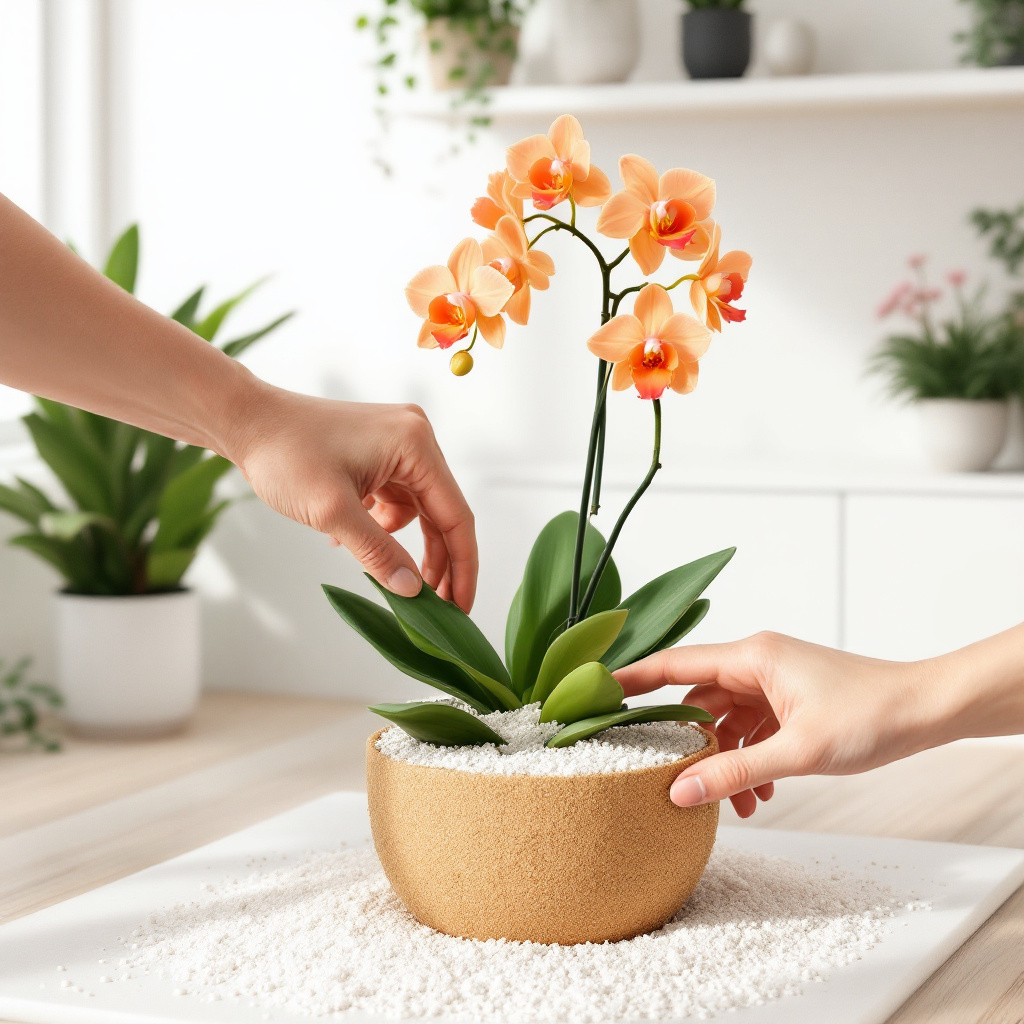
Orchids are renowned for their delicate beauty and unique care requirements, particularly concerning their watering needs. Understanding these requirements is crucial for successful orchid cultivation. Generally, orchids thrive in an environment that offers consistent moisture without becoming waterlogged. The typical routine for watering these plants involves watering once a week during the cooler winter months. In warmer, drier conditions, however, the frequency may increase to twice a week to ensure adequate moisture levels.
The watering frequency can vary depending on several factors, including the orchid species, potting medium, and environmental conditions. For example, epiphytic orchids, which grow on trees in their natural habitat, often require a more frequent watering schedule to mimic their humid native environments. Conversely, terrestrial orchids may need less water due to their different growing conditions.

Orchid enthusiasts should observe their plants for signs indicating their watering needs. Wilting leaves, a dry potting medium, or roots that have turned a light brown color can signal it is time to water. On the other hand, overwatering can lead to root rot, which is detrimental to the plant’s health. It is paramount to allow the growing medium to dry out between waterings, as prolonged dryness can also have negative consequences. If neglected, an orchid may show signs of distress, such as dropping leaves or failing to bloom, which signals urgent intervention is needed.
Maintaining the delicate balance of moisture is essential for the well-being of orchids. Proper watering practices not only support healthy growth but also enhance the stunning blooms that characterize these plants. Understanding their unique watering requirements will go a long way in ensuring a vibrant and flourishing orchid collection.
Can Orchids Survive a Month Without Water?

The question of whether orchids can survive a month without water is a critical one for both novice and seasoned orchid enthusiasts. Orchids are resilient plants that have adapted to a variety of environments; however, their water needs are relatively specific. Generally, most orchids thrive in conditions where they receive consistent moisture, and while they can tolerate brief periods of dryness, prolonged neglect can lead to severe consequences.
Under optimal conditions, many orchids can typically endure a week or two without water, depending on the species, growing medium, and environmental conditions. However, allowing an orchid to go a full month without water is ill-advised and poses significant risks. Prolonged drought can lead to dehydration, causing the plant to enter a state of distress that is often marked by yellowing leaves and wilting flowers. These early signs of dehydration indicate that the orchid is not receiving sufficient moisture to sustain its vital functions.

What’s more concerning is that once an orchid begins to show signs of stress from lack of water, recovery can be a complicated process. For instance, a dehydrated orchid may require careful rehydration management to revive it effectively. This process might involve soaking the roots in water or using a misting technique to avoid shocking the plant. However, it is essential to assess the extent of the damage first. Root rot, which may occur if the orchid is subsequently overwatered after a drought, can compromise the plant’s health even further.
In conclusion, while an orchid may survive a short period without water, a month without proper hydration is far beyond its limits and can lead to irreversible damage. For optimal health, it is crucial to establish a consistent watering routine that meets the specific needs of your orchid species.
Watering Techniques for Different Orchid Growing Media
When it comes to watering orchids, understanding the specific growing media is essential for optimal plant health. Orchids thrive in various substrates, including bark, moss, and potting mixes, each presenting unique watering requirements due to their differing moisture retention and drainage properties.
Starting with bark substrates, which are commonly used for many epiphytic orchids, they provide excellent aeration but can dry out quickly. It is advisable to water these orchids thoroughly until water drains from the bottom of the pot. Allow the media to dry out slightly between watering sessions, often taking 7 to 14 days, depending on environmental conditions such as humidity and temperature. Regularly assessing the moisture level by inserting a finger into the bark can help determine the right time to water.

Moss, particularly sphagnum moss, is another popular growing medium. It retains moisture more effectively than bark but can also hold excessive water, leading to potential root rot. To water orchids grown in moss, it is crucial to ensure the moss is evenly moist but not saturated. A common practice is to water until the moss appears saturated, then allow the top layer to dry out before the next watering. It typically requires watering every 5 to 10 days, depending on the humidity levels in their environment.

Lastly, potting mixes designed for orchids often include a combination of materials such as bark, charcoal, and perlite. These mixes provide a balance of moisture retention and drainage. Watering should be done until the mix is thoroughly wet, but similar to bark, it’s crucial to let the mix dry out slightly before subsequent watering. Monitoring moisture levels in potting mixes through touch can help avoid the pitfalls of overwatering, which can be detrimental to the health of the orchid.
Signs of an Underwatered Orchid and How to Revive It
Orchids are delicate plants that require specific care, particularly regarding their watering needs. When an orchid is underwatered, several signs can become evident. The most noticeable symptom is wilting leaves, where the leaves appear limp and droopy. This occurs because the plant is unable to take in enough moisture to maintain its structural integrity. Additionally, if you observe the roots of your orchid, you may find that they have shriveled up and turned a dry or greyish color, indicating insufficient hydration.

Another common issue that arises from underwatering is flower drop. Healthy orchids typically bloom beautifully, but when deprived of adequate moisture, they may prematurely lose their flowers to conserve energy. If you notice these symptoms, it is crucial to act promptly to revive your orchid and restore its health.
To effectively reintroduce water to an underwatered orchid, one technique is to soak the roots. Begin by filling a basin or bucket with room-temperature water and submerging the orchid pot, ensuring that the water level reaches just below the rim of the pot. This allows the roots to absorb water through the drainage holes, providing a thorough soaking. It is essential to avoid letting the plant sit in water for too long, as this could lead to rot.

Moreover, adjusting your watering schedule is vital for the orchid’s recovery. After a thorough soaking, monitor the moisture levels and only water again once the potting medium feels dry to the touch. This practice encourages healthy root growth and ensures that the orchid receives the hydration it needs without the risk of overwatering. By following these strategies, you can help your underwatered orchid regain its vitality and flourish. Regular attention to its watering needs will support its long-term health and blooming potential.